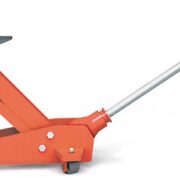Many homeowners dream of a rich, verdant grass. A beautiful yard enhances your home’s curb appeal and provides a welcoming space for family gatherings, outdoor play, and relaxation. However, achieving that picture-perfect lawn can be challenging, significantly if your grass is thinning or patchy. One of the most effective solutions for revitalizing a struggling lawn is lawn slit seeding. This technique promotes new grass growth and strengthens your turf, leading to a thicker, healthier lawn.
In this article, we’ll explore what lawn slit seeding is, why it’s so effective, and how it can help transform your yard into the vibrant outdoor space you’ve always wanted.
What is Lawn Slit Seeding?
Understanding the Basics
Lawn slit seeding is a specialized lawn care technique that involves cutting small slits or grooves into the soil and directly inserting grass seed into those openings. This process allows the seed to contact the soil better, improving germination rates and encouraging faster, more robust growth.
Unlike traditional overseeding, which involves spreading seeds over the surface of your lawn, slit seeding ensures that the seeds are securely placed in the soil. This reduces the likelihood of seeds either being consumed by birds or washed away by rain. The end effect is a far more efficient approach to fill in empty areas and thicken your lawn.
How Slit Seeding Works
The process starts with a specialized machine known as a slit seeder. This machine has blades that create thin grooves in the soil as it moves across the lawn. The blades break up compacted soil and cut through the thatch layer, therefore providing the ideal conditions for grass planting. As the machine moves, it simultaneously drops grass seed into these slits, ensuring the seed is placed directly into the soil where it has the best chance to grow.
This method’s precision makes it ideal for anyone looking to improve their lawn’s density and overall health.
Why Lawn Slit Seeding is the Best Choice for Your Lawn
Promotes Stronger Grass Growth
One of the most significant benefits of lawn slit seeding is that it helps establish more substantial, healthier grass. Because the seeds are placed directly into the soil, they are protected from external factors affecting their growth, such as wind, water runoff, and animals. This ensures that more seeds germinate successfully, leading to a thicker, more resilient lawn.
In addition, slit seeding allows new grass to grow alongside your existing turf, reinforcing weak or thinning areas. The new growth helps choke out weeds, improve drought resistance, and create a lawn that looks and feels fuller.
Ideal for Repairing Patchy Lawns
If you’ve noticed that your lawn has become patchy over time, slit seeding can be an excellent solution. Bare spots often occur due to heavy foot traffic, disease, pests, or environmental conditions. While overseeding may help to some extent, slit seeding offers a more targeted approach, ensuring that new grass grows directly where it’s needed most.
By inserting seed into the soil, the new grass can better establish its root system, filling in gaps and creating a more uniform appearance. In a few short weeks, you’ll notice that your lawn looks significantly healthier and more even.
Enhances Lawn Resilience
A lawn that has been slit-seeded is more resilient to environmental stressors such as heat, drought, and foot traffic. The new grass roots grow deeper into the soil, allowing the lawn to access more water and nutrients. The deeper roots also help to stabilize the soil and prevent erosion, making your lawn better equipped to handle heavy rains and wind.
With lawn slit seeding, you’re not just improving the look of your lawn you’re strengthening it from the ground up.
When to Consider Lawn Slit Seeding
The Best Time for Slit Seeding
Timing is critical when it comes to lawn slit seeding. The type of grass you have and your local temperature will determine when slit-seed your lawn is most appropriate. Early fall is often the ideal time to seed for cool-season grasses because the cooler temperatures and higher moisture levels help support seed germination and root development. Spring is another option, especially if your lawn has suffered damage from winter weather.
For warm-season grasses, late spring or early summer is usually the best time for slit seeding, as the warmer soil temperatures encourage rapid growth.
Regardless of the season, it’s vital to ensure that your lawn is prepared adequately for slit seeding to maximize its effectiveness.
Lawn Preparation for Slit Seeding
Before beginning the slit seeding process, it’s essential to prepare your lawn. Cut your lawn first at a lower level than usual. This will make it easier for the slit seeder to access the soil and create even grooves. Next, clear away debris such as leaves, sticks, or excess thatch, which can block the seed from contacting the soil.
Aerating your lawn ahead of time is also a smart idea. Aeration helps reduce soil compaction and improves the flow of air, water, and nutrients for the grassroots which can improve slit seeding outcomes.
Lawn Care After Slit Seeding
Watering and Maintenance
Once your lawn has been slit-seeded, proper care is essential to ensure successful germination and growth. Watering is necessary, as the newly planted seeds need consistent moisture to sprout. For the first two weeks following seeding, try lightly watering your lawn often. After the grass starts to flourish, you can progressively reduce the watering frequency and boost the water delivered.
Furthermore crucial is not cutting your grass till the new grass is roughly three inches tall. Early grass cutting might harm the delicate seedlings and slow their development.
Fertilization and Weed Control
Fertilizing your lawn after slit seeding can provide the nutrients needed to support healthy growth. Encourage deep root development and vivid color with a balanced, slow-release fertilizer. Be careful to follow the recommended application rates, as over-fertilizing can do more harm than good.
In terms of weed control, it’s best to avoid using herbicides right after slit seeding, as they can interfere with seed germination. Once the new grass has established itself, you can apply a pre-emergent weed control product to prevent unwanted plants from competing with your grass.
Conclusion: Lawn Slit Seeding for a Healthier Yard
Best lawn care in Red Deer, Lawn slit seeding is a highly effective method for revitalizing your lawn and promoting new grass growth. Planting seeds directly into the soil ensures better germination, stronger roots, and a thicker, more uniform lawn. Whether you’re dealing with thinning grass or bare patches, or simply want to enhance the overall health of your yard, slit seeding can be the key to achieving the lush, green lawn you’ve always desired.
With proper timing, preparation, and care, lawn slit seeding can transform your outdoor space, making it more beautiful and resilient for years to come.
If you want morе еxciting contеnt visit. Globallyviz.com














Comments